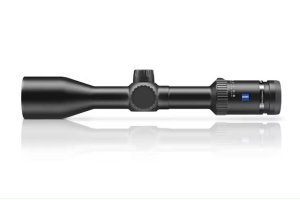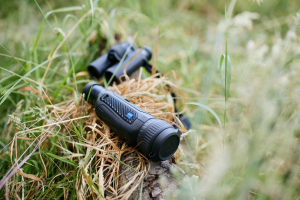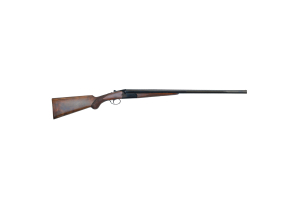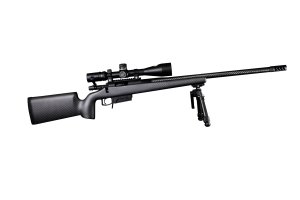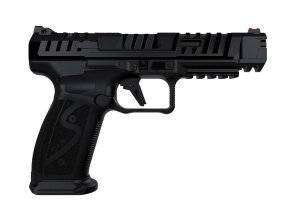
PRODUCT REVIEW - ZEISS S5
Daniel O'Dea sees the bigger picture with ZEISS S5
The ever-growing popularity of long-range shooting disciplines has brought with it a greater array and availability of rifle optics and, at the top end of town, Zeiss needs no introduction as arguably one of the world’s premium manufacturers. The Zeiss LRP S5, acronym for Long Range Precision, is part of their first focal plane (FFP) scope product family, FFP referring to the position of the reticle in the riflescope’s erector tube assembly.
In brief, if the reticle is located in the FFP it’s placed to the front of the magnification lenses, while in the second focal plane (SFP) it’s the other side of those lenses, the difference being how the reticle is viewed as the variable magnification is changed. With SFP scopes, as magnification increases or decreases the reticle appears the same size regardless of power selected.
With FFP scopes the reticle remains the same size relative to the power selected, so in practical terms, when viewed through an FFP scope the reticle looks smaller at low magnification and larger at high magnification.
The big difference between the two is when you introduce ballistic reticles with hash marks. On an FFP scope, as the reticle remains the same size relative to magnification (smaller or bigger), the value of said hash marks also stays the same, though not so on an SFP scope where these values vary as does the power. This is why SFP riflescopes with range-finding reticles require the power change ring to be registered at a certain power setting for values quoted to be valid. As such, generally speaking FFP scopes are preferred for long-range competition and hunting as reticle marking values remain constant and don’t change as magnification is increased or decreased.
The Zeiss LRP S5 comes in either a 3.6-18x50 or a 5-25x56 with a choice of MOA or MRAD illuminated reticles and for review purposes, Zeiss agent Outdoor Sporting Agencies provided the former in both reticle options. Dimensionally the LRP seems to follow another emerging trend in long-range riflescopes as, once upon a time, it seemed long-range scopes were, well, long.
These days it appears short and thick does the trick and they’re certainly more compact with length giving way to girth in both main tube and turret housing. It doesn’t seem so long ago that 34mm main tubes were rare and almost a novelty, yet now they dominate the market in longrange rifle optics. And for good reason as that extra room in the main tube and turret housing provides the necessary space for the mechanicals to maximise elevation adjustment.
To this end the LRP offers a massive 40.7 MRAD or 140 MOA of vertical adjustment, claiming ‘Best in Class’ for total elevation. For context, 1 Mil being 1m at 1000m means you could dial on for 40m of bullet drop at that range and for extreme range shooting, this means you have plenty of adjustment to work with before reverting to hold over (lateral adjustment runs out to 24MRAD or 60MOA left to right).
Dimensionally overall the scope is just 330mm long and, as mentioned, the main tube is 34mm in diameter. The 50mm objective lens housing has an overall diameter of 56mm with the ocular housing 46mm and the whole package weighs just under a kilo at 930 grams. Like similar longrange optic designs in appearance the scope is dominated by the turret towers, three in total with a conventional layout, top controlling elevation, right for windage and left for parallax and illumination adjustment.
The turrets sit off a central housing that’s spherical in shape about the size of a handball with six flat sides, somewhat like a round-cornered dice in shape. From the base of the housing to the top of the elevation tower is about 90mm (height) and from left turret cap to right about 120mm (width). The turrets have clearly audible and tactile click adjustments at values of 0.1 Mil or 0.25 MOA per click. On the turrets, multiple rotation is enhanced by large print dual row engraving for the values, providing fast reference and rapid precise adjustment.
The elevation turret incorporates a zero stop feature which is noted as being ‘rock solid’ for confident and absolute return to zero and there’s an external lock on the windage turret to prevent accidental adjustment. Basically, the turret needs to be pulled out to adjust and pushed back to lock in place. Both windage and elevation turrets are oversized at about 40mm in diameter, heavily ribbed and in use are easy to grip and adjust.
The left tower houses a single 2032 battery to power illumination as well as control brightness and parallax adjustments. This turret comprises two adjustment wheels with the outer (and slightly smaller diameter) wheel handling illumination, with its endcap unscrewing to reveal the battery compartment. In similar fashion to the windage adjustment lock, this outer ring pushes in and out though in this case serves as an on off switch for illumination. The inner (larger) ring adjusts parallax from 25m to infinity. The illumination is digitally controlled and features ‘Diffractive Reticle illumination Technology’ which “allows for far greater reticle illumination intensity, therefore offers a truly daylight visible reticle illumination even in the harshest lighting conditions”. The illumination system also has ‘auto off’ and ‘motion’ features and if left on for four hours will turn itself off.
Likewise if the scope is tilted greater than 45 degrees, like laying the rifle on its side on a bench, the illumination’s motion sensor switches it off. As soon at the rifle is righted the illumination instantly turns back on and the same is true for angles plus or minus 70 degrees from horizontal. If circumstances dictate a need to shoot in excess of these angles, from a tree stand for instance, the motion sensor can be turned off via a short procedure you’ll find in the manual, something I tested with an unmounted scope. With illumination on and viewing through the eyepiece, presenting these different angles produced immediate results with the reticle lighting up and falling dark instantaneously at angles designated.
Optically the usual Zeiss combination of premium Schott glass, fluoride lens elements and their proprietary Zeiss T* and LotuTec coatings provide a winning combination to produce arguably some of the best shooting optics on the planet. In my experience their optics always appear clear and bright for superb light transition (quoted at 90 per cent) in pretty much all lighting conditions.
I mounted the MRAD LRP S5 on my Howa 1500 in 6.5 Creedmoor with OSA providing a set of 34mm medium-height Tier One Tac-Rings for the job. The scope didn’t disappoint with tracking and adjustments spot-on, clarity and brightness optically as good as it gets and mechanically everything working as advertised. It’s the features and ergonomics of the Zeiss LRP S5 which stood out for me.
I liked the compact appearance and design. On a competition rifle which may be used around barricades and obstacles, you really don’t want too much length out front where you might go bashing the objective lens into things if hastily assuming position. It would likewise stand to reason that shorter main tube lengths between lens housings would offer more rigidity. The dial markings are large and easy to read while the oversized turrets are simple to grip and manipulate in any conditions, adjustments clear and precise, audible and tactile.
Changing magnification again is easily done via the large ribbed gripping surface or with the optional ‘Fast Throw’ lever combined with large, engraved power setting markings, while at the same time diopter and focus adjustment can be quickly made at the eyepiece. Eye relief is ample at 90mm and field of view generous comparative to power setting, aiding swift target location when required.
The unit’s not overly heavy for its variable range and features, so could equally be at home on a long-range hunting rifle as a competition option. Lastly, the scope is built as tough as it looks and will withstand multiple shock tests at 1500 G-force (that’s .460 Weatherby Magnum territory) with internals designed in testing to withstand more than 800 impact cycles at 1000 G-force. Water resistance to 400 mbar ensures the scope is impervious to moisture in all hunting conditions.
The Zeiss LRP S5 is a great riflescope and would be an ideal choice for those in the target market if budget extends, as it’s a premium product and priced appropriately, though that’s not to say it’s too expensive compared to some direct competitors at around $4500-$5000. It’s far from alone dollar-wise in the market and could even be considered good value if fishing that pond.
Published by SSAA
October 2023 Australian Shooter, written by Daniel O’Dea

